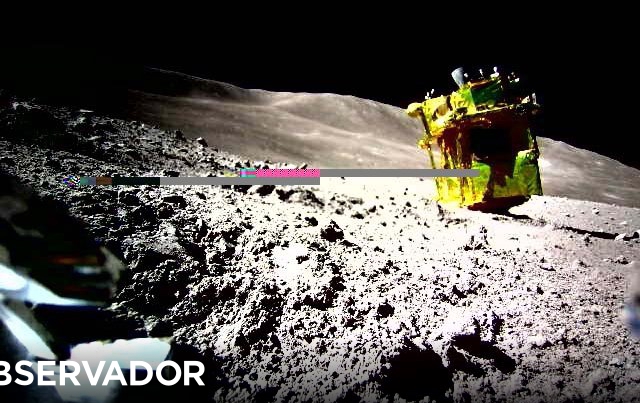
The Japanese SLIM probe survived the freezing temperatures of its second lunar night, which lasted two Earth weeks, and transmitted new images, the Japanese space agency Jaxa announced this Thursday.
“We received a response from SLIM yesterday [quarta-feira] at night and we confirmed that it had successfully completed its second night on the Moon”, declared Jaxa, on the profile on the social network X (formerly Twitter) dedicated to the module, which landed on the Moon at the end of January.
“The navigation camera rushed to take the usual landscape photographs for a short period,” added Jaxa, which also published a black and white photograph of the rocky surface of a lunar crater taken by the probe.
The agency indicated that the data collected also shows that Some of SLIM’s temperature sensors and battery cells are starting to failbut the main functions seem to be holding up.
This is the third awakening of SLIM (Smart Lander for Investigating Moon), which successfully completed a precision lunar landing on January 20, making Japan the fifth country to land on Earth’s natural satellite, after the United States of America, from the former Soviet Union, China and India.
Japan places probe on the Moon and becomes the fifth country to reach Earth’s satellite
However, due to an engine problem in the last tens of meters of the descent, SLIM landed at an angle that deprived the photovoltaic cells, facing west, of sunlight.
After an initial period of inactivity of around ten days and a first awakening, the probe was placed into hibernation and survived the first lunar night, before returning to sleep in early March.
SLIM landed in a small crater, less than 300 meters in diameter, called Shioli. Before being turned off, the spacecraft was able to unload two mini-rovers (lunar exploration vehicles), which were supposed to carry out analyzes of rocks in the internal structure of the Moon (the lunar mantle), about which very little is still known.
Another probe, Odysseus, sent by the private North American company Intuitive Machines, also managed to land on the Moon at the end of February. However, the company, which initially hoped to reactivate it after the lunar night, announced on Saturday the definitive closure of the probe.
Odysseus was the probe that landed furthest south on the Moon, an area of particular interest to major powers because it contains water in the form of ice.
The North American space agency NASA hopes to resume manned flights to the Moon under the Artemis program.
From the (many) attempts to reach the Moon to signs of life on one of Jupiter’s satellites: the space missions that will mark 2024
Source: https://observador.pt/2024/03/28/sonda-japonesa-slim-sobrevive-a-segunda-noite-lunar/

